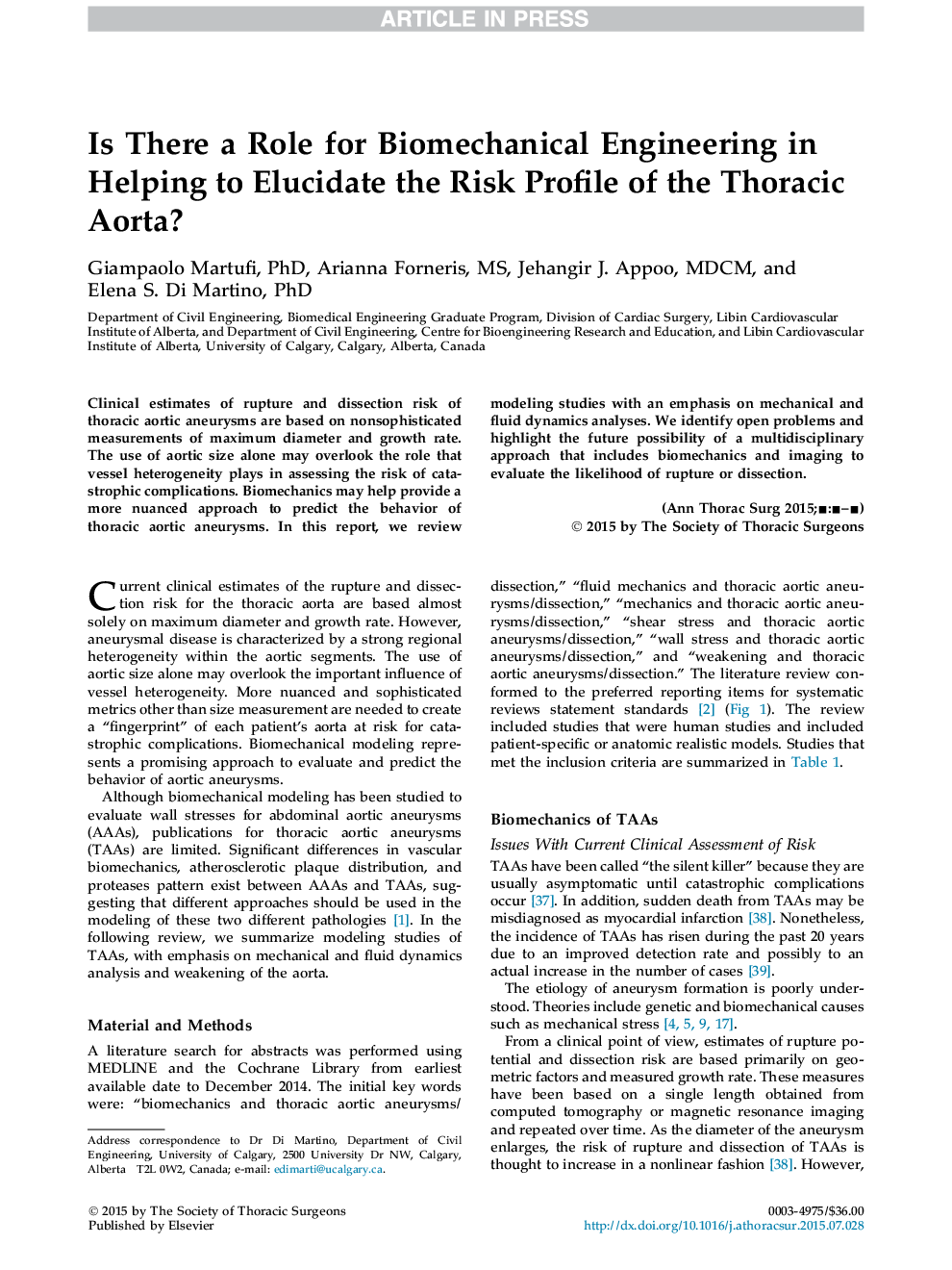| Article ID | Journal | Published Year | Pages | File Type |
|---|---|---|---|---|
| 2871630 | The Annals of Thoracic Surgery | 2016 | 9 Pages |
Abstract
Clinical estimates of rupture and dissection risk of thoracic aortic aneurysms are based on nonsophisticated measurements of maximum diameter and growth rate. The use of aortic size alone may overlook the role that vessel heterogeneity plays in assessing the risk of catastrophic complications. Biomechanics may help provide a more nuanced approach to predict the behavior of thoracic aortic aneurysms. In this report, we review modeling studies with an emphasis on mechanical and fluid dynamics analyses. We identify open problems and highlight the future possibility of a multidisciplinary approach that includes biomechanics and imaging to evaluate the likelihood of rupture or dissection.
Related Topics
Health Sciences
Medicine and Dentistry
Cardiology and Cardiovascular Medicine
Authors
Giampaolo PhD, Arianna MS, Jehangir J. MDCM, Elena S. PhD,
